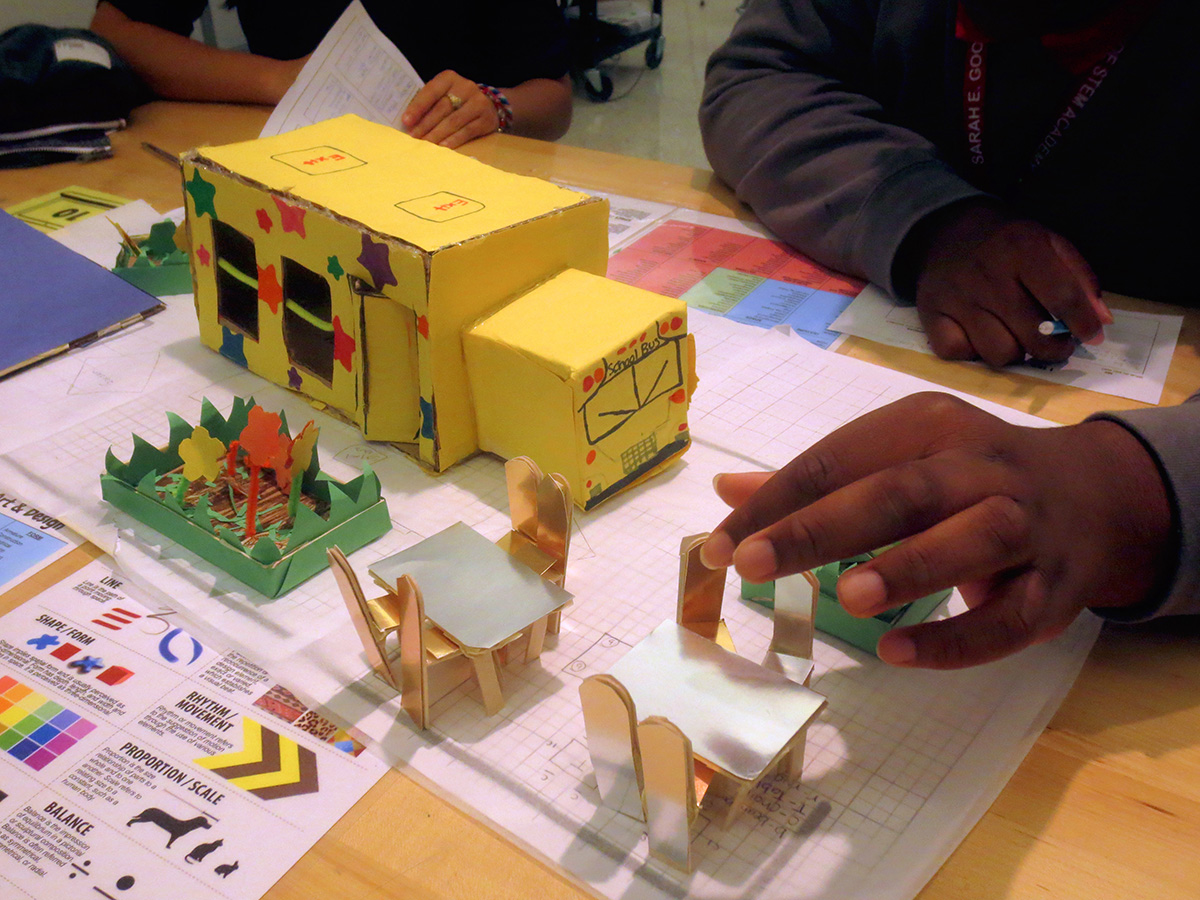Goode Students Turn Foyer Into Space of Their Own
By Andrew Breen
Junior students in their first Graphic Arts class met every day for 80 minutes from September to February. With the administration's blessing, students took ownership over and activated a physical space in the school as a platform to express their and other students’ ideas and voices in response to student-generated concerns. Students learned and applied foundational graphic art techniques as they constructed objects and altered physical space. The entire Goode student and staff population observed the ongoing development of the space and, eventually, participated in various activities held in the space, like posting school concerns and solutions on a written wall, as well as hosting an art and creative writing year-end reception. Eventually, the students also welcomed additional community members from the neighborhood into the space.

Goals and Objectives
- Students will engage in a school-wide dialogue through a participatory art project.
- Students will define their own learning opportunities that are self-directed and open-ended.
- Students will use provided art materials and technology to collaborate in meaningful actions.
Guiding Questions
- What is community? Why is it important?
- How is the class / school unified?
- How do socially engaged artists create a community space?
- How can artists and designers create a space that supports interaction and unity?
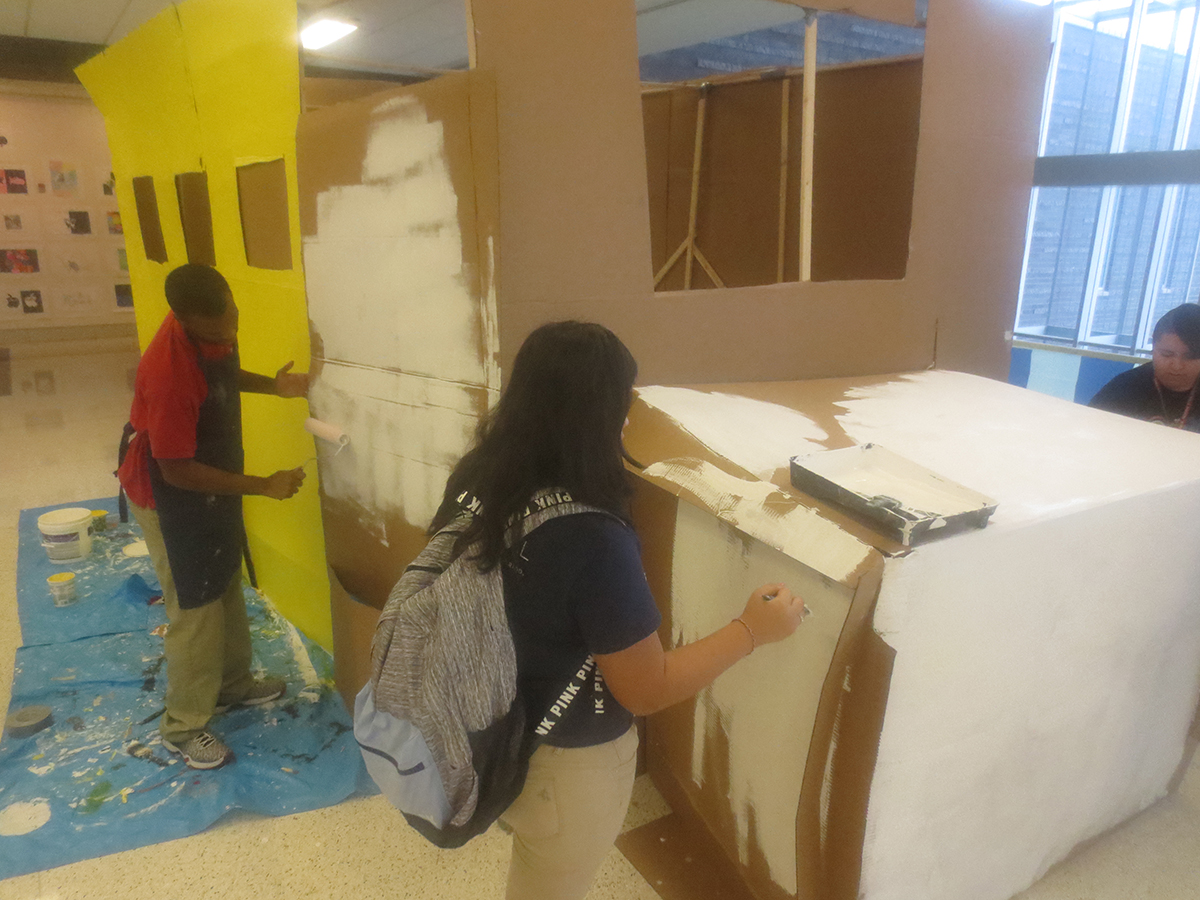
Documentation + Assessment
- Students completed a daily digital journal through Canvas online learning system.
- One of the groups was tasked with photographing and documenting the work of the other group projects. This group also interviewed each student about their project, process, and their overall feelings about the collaboration.
- Several students used our camera equipment to document the process of making the space. They compiled everything in Google Drive and then used their smartphones to edit the videos. These videos were later projected out onto the foyer space for the school to view.
- In the beginning, students were assessed on a written and visual planning guide; each group also generated a specific checklist broken down into 4 deadlines for their projects. As collaborations continued, students modified these checklists according to their changing ideas and materials. Each week, students kept a log of what they did and evaluated themselves on the successes and challenges of working with different groups.
Learning Activities
Step 1
Learning to Collaborate
Students build skills as collaborators through time-based, open-ended prompts. Activities include an “empty the roll” foil activity to create collaborative sculptures, drawing continuous lines while passing markers from person to person, and making temporary physical spaces with paper. Teacher verbally highlights students’ willingness to adapt to each other’s actions and the development of roles within teams.
Step 2
Kerry James Marshall
Screen the Art21 Kerry James Marshall episode, using “See, Think, Wonder” questioning as an avenue to talk about works at the MCA, as well as the various discussions of graphic design in our culture.
Step 3
Field Trip to Museum of Contemporary Art
Use Kerry James Marshall’s De Style and Baobab Ensemble artworks to open discussion on community gathering spaces. Students explore other pieces by Kerry James Marshall and works in the museum collection to consider what makes individuals drawn to a specific art piece/experience.
Step 4
What Does Our Community Need?
Students work in pairs to research issues that concern them and their school community. In a large group discussion, common themes emerge, including school culture, feelings of disconnectedness, restrictiveness of uniforms, violence at school, lack of student agency, and big changes without student input.
Step 5
Reflecting on Space
Guide further student discussion of how art practices might be used to explore the issues raised in Steps 4 and 5 by explaining how artists and designers create interactive public spaces based on listening to community input, creating sketches, receiving feedback, and using the elements and principles of art and design. Students reflect on how the needs of their school community might be addressed through building or altering space.
Step 6
Design Charrettes
Students focus on a specific issue, such as their lack of choice in school as evidenced in the uniform policy and pre-selected classes. Divide the class into smaller groups to plan and design a gathering space that brings more student and community choice to a specific space in the school. This space can be used to house events, art experiences, and other student-generated activities. Each group makes their own models for the space.
Step 7
Project Proposals
The whole class examines each group’s model as teacher asks students to notice the diverse student generated approaches. Students vote on which main project they want to work on and begin combining elements from all of the designs into one main proposal to implement in the school community. Present project proposal to administration for approval and begin to gather resources.
Step 8
Co-constructing Space
Divide students into small groups to implement different aspects of the final class proposal. Students develop sketches and split their specific project into 4 stages, writing down specific achievable goals for each stage. Students work on executing their portion of the project. As students address the technical and conceptual problems, they learn to be flexible and adjust their project goals as needed.
Step 9
Taking a Step Back
As the physical alteration of the space takes form, teacher guides student reflection by asking questions about the practical uses of the space and the conceptual connections between the space and the implementation of students’ designs. Students examine their group interaction, clarify their goals as collaborators, and identify the necessary steps to finish their portion of the project.
Step 10
Activating the Space
Students install various interactive pieces into the space. Class discusses how to divide and balance the space to accommodate and invite visitors. Invite the entire school population to use and help transform the space to suit the school community’s needs. Invite a group of elementary school students from the neighborhood to visit and use the space with students as tour guides, explaining their design decisions to visitors. Plan an art and creative writing reception with other teachers to celebrate student work throughout the school.
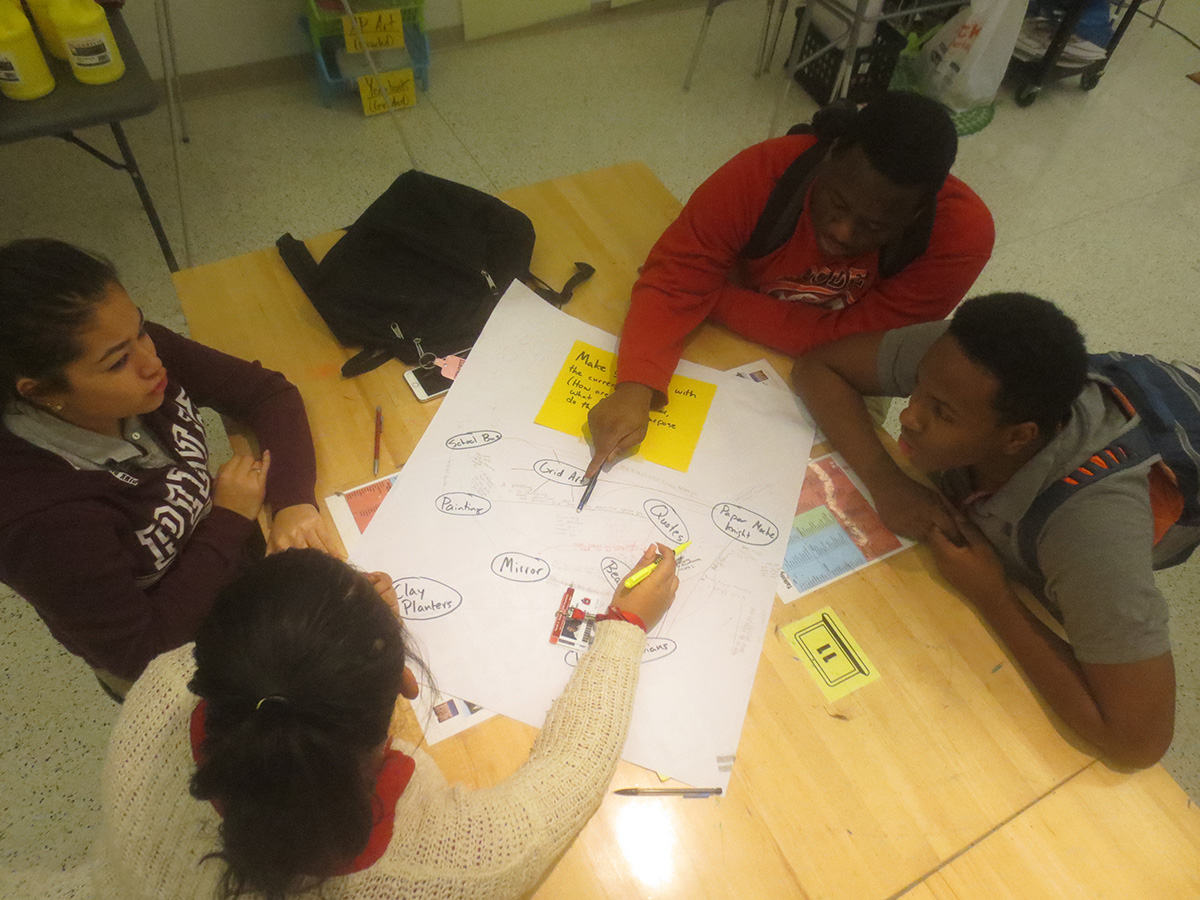
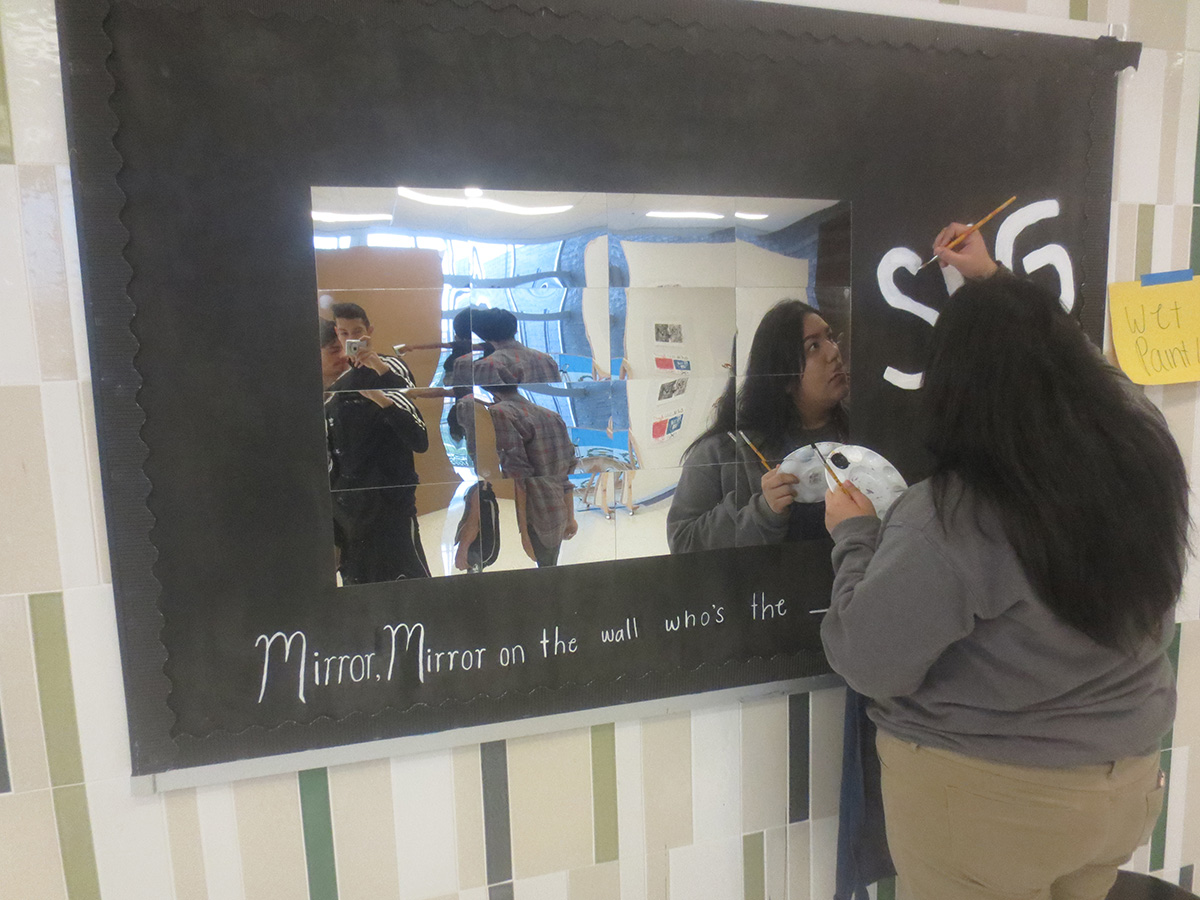
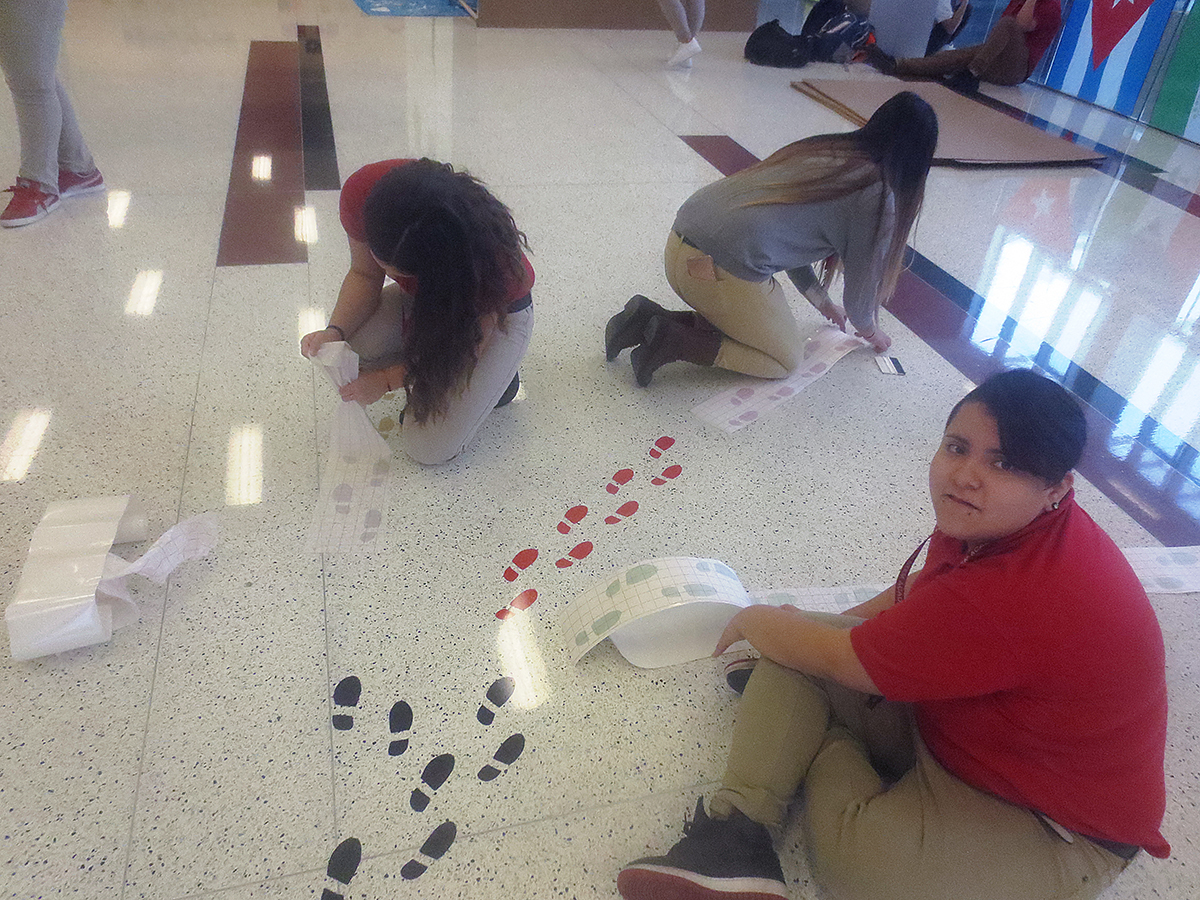
Materials
- Design Charrettes: Construction Paper, Tracing Paper, Colored Foam Sheets, Tape, Glue, Popsicle Sticks, Recycled Materials
- Periodic Discussions, Idea Building: Chart Paper, Sticky Notes
- Group Projects for Foyer: Dependent on materials available, student interest and physical space. This included painted and vinyl-cut text, hand-sewn floor cushions, a cardboard school bus installation, school mural, and areas for students to write responses about concerns and solutions involving the school culture.
- Documentation: Cameras, Google Drive, phones
MCA Connections
The Kerry James Marshall exhibition, Mastry, played a large role in guiding our project. During our field trip, we used Kerry James Marshall's artwork as a lens to to talk about power and representation, and the Artist Guided Tours at the MCA allowed students to talk openly about what they saw, thought, and wondered about contemporary art. This form of dialogue was used throughout the making of the foyer space.
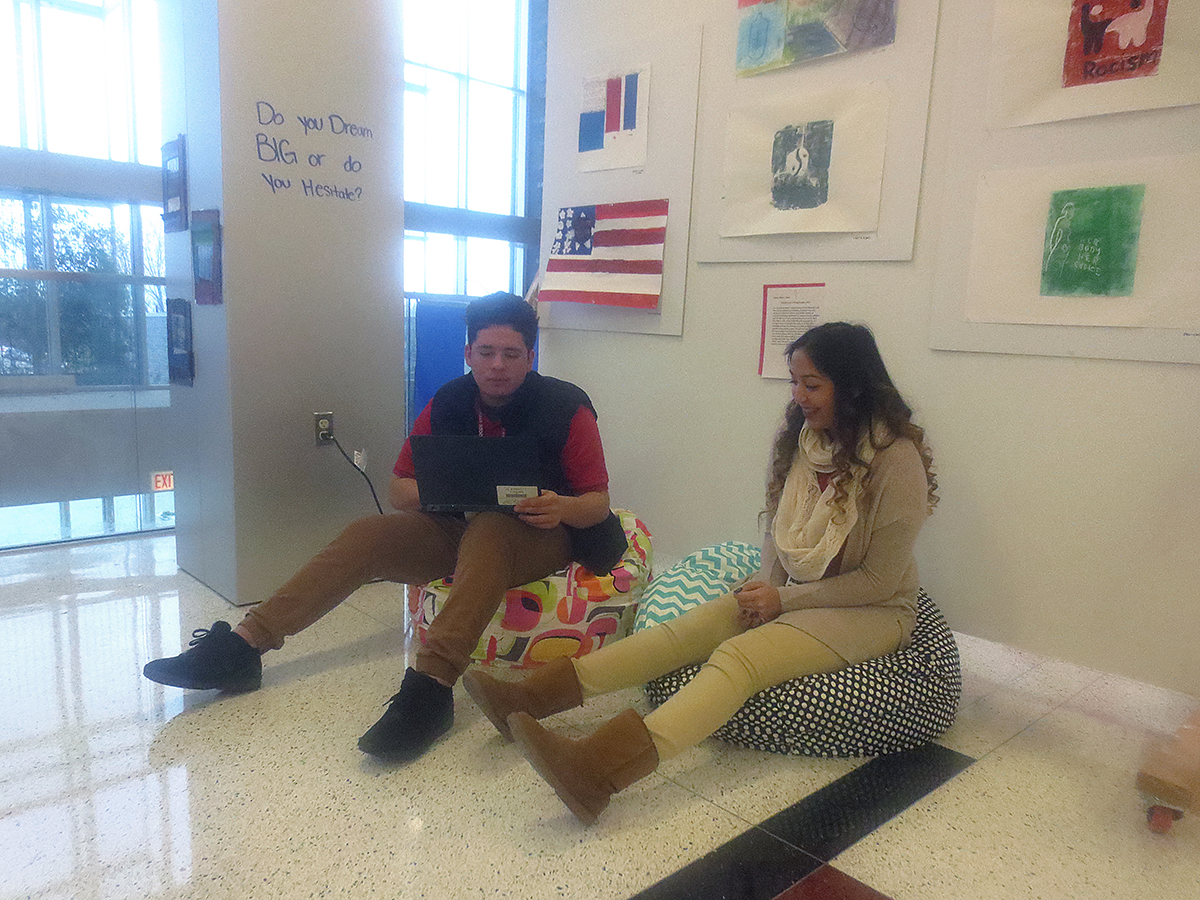
References + Resources
Andrew Breen
Sarah E. Goode STEM Academy
Andrew Breen received his BFA in Photography from Columbia College Chicago where he also earned a minor in Art History. He taught at the Evanston Art Center for seven years. This experience motivated him to pursue his teaching credentials at Northeastern Illinois University. For the past two years, he has taught art, graphic design, and yearbook at Goode STEM Academy in the Ashburn neighborhood. He facilitates students’ development as image makers and critical consumers. His ultimate goal is to foster his students’ ability to endure and learn from the struggles and discomfort of the artistic process.
Andrew reflects on his process:
Compared to groups in previous semesters, students in this class had more agency and choice in what, how, and where they could create with others. Students met the challenge of taking on new collaborative roles and responsibilities. Despite students working in separate groups, it was exciting and gratifying when members from different groups sought each other out for help with their respective projects.
One of the biggest obstacles was keeping momentum going while balancing this project with the other components of the class curriculum — there was a tremendous amount of excitement during the planning process, but then a lull in energy and enthusiasm. Some of the projects were ambitious, and when problems arose, students had difficulty maintaining momentum and adjusting to obstacles. I had to continually reinforce the idea that challenges are a natural and essential part of the artistic process.
